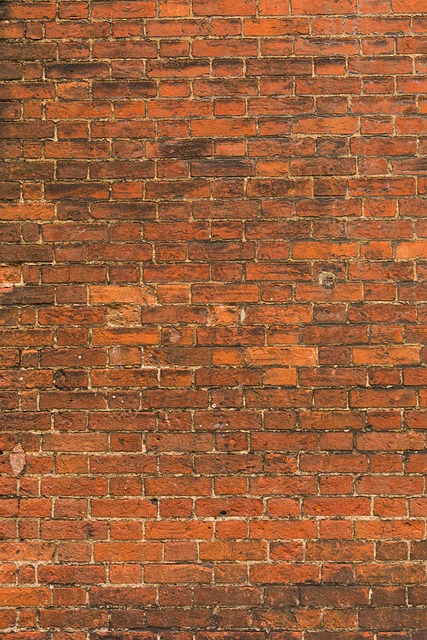Homeowners can effectively remove grout stains in kitchens and bathrooms by understanding stain causes (e.g., cooking oils, water, mold) and grout types (cement-based, epoxy, silicone). Essential tools include rubber gloves, safety goggles, a stiff-bristled brush, mild dish soap, a spray bottle, and a damp microfiber cloth. Natural solutions like baking soda and vinegar are gentle and eco-friendly; chemical cleansers are more intense and should be used cautiously after testing. Regular cleaning, sealing, and proper application techniques prevent future stains. Skipping preparation or not allowing enough drying time can lead to ineffective results.
Grout stain removal is a critical yet often overlooked aspect of kitchen and bathroom maintenance. These hard-to-reach crevices can accumulate dirt, mold, and other substances, leading to unsightly stains. Understanding the causes of grout stains is the first step in effectively removing them. This article guides you through various aspects of grout stain removal, from identifying culprits specific to kitchens and bathrooms to eco-friendly cleaning solutions and prevention tips. Learn how to navigate the process safely and successfully, ensuring your grout lines are stain-free for longer.
Understanding Grout Stain Causes: Kitchen and Bathroom Culprits

Grout stain removal is a common task for homeowners, especially in kitchens and bathrooms where stains can quickly accumulate due to high moisture levels and frequent use. Understanding the causes of grout stains is the first step towards effective removal. In kitchens, spills from cooking oils, grease, and acidic substances like vinegar or lemon juice can deeply penetrate grout lines. These substances react with the calcium and magnesium in the grout, leading to unsightly discolouration over time.
Bathrooms present their own set of challenges, with water stains, mold, and mildew being the primary culprits. High humidity contributes to the growth of these organisms, which can leave behind stubborn stains. Additionally, bathroom cleaning products, like bleach or harsh detergents, can cause chemical reactions that result in grout discolouration. Knowing these causes enables homeowners to employ targeted cleaning methods for effective stain removal from grout lines.
Different Types of Grout and Their Stain Resistance

Grout, often overlooked, plays a crucial role in the overall aesthetics and functionality of kitchens and bathrooms. It’s not just about filling the gaps between tiles; grout adds texture, color, and definition to these spaces. However, it’s also prone to attracting stains due to its porous nature, especially in high-moisture environments. Understanding the different types of grout can help homeowners and professionals alike in effectively removing stains from grout lines.
There are primarily three types of grout commonly used: cement-based, epoxy, and silicone. Cement-based grout is the most standard and affordable option but tends to be more susceptible to staining due to its porous structure. Epoxy grout, while more expensive, offers superior stain resistance thanks to its harder composition and lower porosity. Silicone grout, known for its flexibility and water-repellent properties, is another effective choice for preventing stain accumulation, making it ideal for areas with high moisture exposure like bathrooms. When it comes to removing stains, knowing the grout type allows for tailored cleaning methods—from simple baking soda pastes to specialized chemical cleaners—ensuring that those grout lines stay pristine and free from unsightly marks.
Preparation: Safety Gear and Cleaning Tools for Grout Stain Removal

Before tackling any stain removal project, especially in high-traffic areas like kitchens and bathrooms, it’s crucial to gather the right tools and gear for safety and effectiveness. When it comes to removing grout stains, protection is key. Start by putting on rubber gloves to shield your hands from harsh chemicals and protect your eyes with safety goggles or glasses. These simple precautions ensure you can work comfortably and safely without risking skin irritation or exposure to harmful substances.
In terms of cleaning tools, you’ll need a few essentials for successful stain removal. A stiff-bristled brush is ideal for scrubbing away grime and dislodging stubborn stains in the grout lines. A gentle yet effective detergent, like a mild dish soap, will help dissolve oil, grease, and other common kitchen and bathroom contaminants. Additionally, a spray bottle filled with warm water or a mild cleaning solution allows for easy application of the detergent, while a damp microfiber cloth is perfect for wiping away residue and achieving that sparkling clean finish.
Step-by-Step Guide: Removing Stains from Grout Lines Effectively

Removing stains from grout lines is a crucial part of maintaining a clean and appealing kitchen or bathroom. Start by gathering your tools: a soft-bristled brush, white vinegar, baking soda, and warm water. First, gently scrub the stained area with the brush to loosen any debris. Create a paste by mixing equal parts baking soda and vinegar, applying it to the stain, and letting it sit for about 15 minutes. Then, using a damp cloth or sponge, wipe away the paste and rinse thoroughly with warm water. For tougher stains, repeat this process until the grout lines are free from discoloration.
Natural Cleaning Solutions for Eco-Friendly Grout Stain Eradication

When it comes to eco-friendly grout stain removal, natural cleaning solutions offer a gentle yet effective approach. Baking soda and vinegar are classic combinations, ideal for tackling everyday stains. For example, creating a paste from baking soda and vinegar can be used to scrub away mineral deposits and dislodge stubborn grime from grout lines. This simple, affordable remedy is safe for tiles and provides excellent results without harsh chemicals.
Plant-based cleaning agents, such as lemon juice or essential oils, are also popular choices. Lemon juice’s acidity helps dissolve grease and grime, while its fresh scent leaves a pleasant aroma. Essential oils, like tea tree oil, possess antimicrobial properties and can be mixed with water for a safe and natural grout cleaner. These options not only effectively remove stains but also contribute to a healthier living environment, making them popular choices for those seeking sustainable solutions for stain removal from grout lines in kitchens and bathrooms.
Chemical Cleansers: When and How to Use Them for Stubborn Stains

Chemical cleansers can be a powerful tool for tackling stubborn grout stains that refuse to budge with regular cleaning methods. When it comes to removing deep-set marks and discolourations, these products offer a more intense approach. However, it’s important to use them judiciously as they can be harsh on the grout material if not applied correctly.
Before reaching for a chemical cleanser, assess the stain’s severity. For mild cases, a simple mixture of water and white vinegar or baking soda can often do the trick. But for tougher stains, especially older ones that have set in, a specialized grout cleaner containing chemicals like oxalic acid or hydrogen peroxide may be necessary. Always follow the product instructions, wear protective gear, and ensure proper ventilation during application to avoid skin irritation or respiratory issues. Test the cleanser on a small, hidden area first to check for any adverse reactions with your grout.
Preventing Future Stains: Sealing and Maintenance Tips for Grout

Preventing future grout stains is key to keeping your kitchen and bathroom looking pristine. Regular cleaning and sealing are essential maintenance steps. Start by sweeping or vacuuming floor surfaces daily to remove loose dirt, food particles, and other debris that can cause staining. For deeper cleaning, use a mild detergent and warm water to mop the floors weekly. This removes oil, grease, and grime buildup.
To seal and protect your grout lines from future stains, apply a high-quality grout sealer after cleaning. These sealers create a protective barrier, repelling liquids and preventing dirt from penetrating the tiny crevices. Regularly reapply the sealer, following the product instructions, to maintain its effectiveness. This simple step can make stain removal much easier and significantly reduce the need for harsh chemicals or frequent deep cleaning.
Common Mistakes to Avoid During the Grout Stain Removal Process

When tackling grout stain removal, homeowners often make mistakes that can lead to less-than-satisfactory results or even damage to their tiles and grout. A common error is using aggressive cleaning agents without understanding the composition of your grout and tile. Different materials require specific care; over-aggressive chemicals can erode protective coatings and damage delicate surfaces. Another blunder is skipping thorough preparation, such as vacuuming loose debris and grime before applying a cleaner. This can prevent the solution from reaching deep into the grout lines effectively.
Moreover, not allowing sufficient drying time between cleaning applications is a frequent oversight. Grout cleaners often require several passes to penetrate stains thoroughly; hasty reapplication without letting the product dry can lead to inconsistent outcomes or even trapping residue within the grout. Remember, patience is key when removing stubborn grout stains. Always follow the manufacturer’s instructions for your chosen cleaner, and test it on a small, inconspicuous area first to ensure compatibility with your grout and tile finish.
